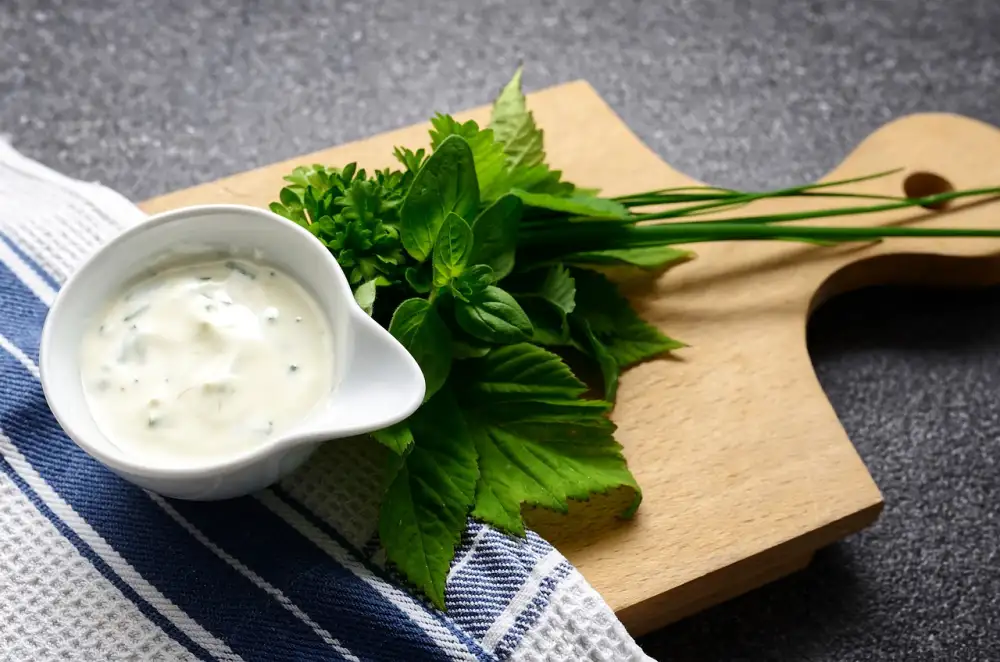Discover the Irresistible Flavors of Eel Sauce: Elevate Your Japanese Cuisine with this Sweet and Savory Delight

Eel sauce, also known as unagi sauce, is a versatile and delicious condiment that adds a unique flavor to Japanese cuisine. This thick, sweet and savory sauce is made from a combination of soy sauce, mirin (sweet rice wine), sugar, and sometimes dashi (Japanese soup stock). Its rich umami taste makes it a perfect accompaniment to various dishes, enhancing their flavors and adding depth to every bite. Whether you're a fan of sushi, grilled eel, or simply looking to elevate your home-cooked meals, eel sauce is sure to delight your taste buds with its irresistible flavor.
History and Origins of Eel Sauce
Eel sauce, also known as unagi sauce, has a rich history that dates back to ancient Japan. Its origins can be traced to the Edo period (1603-1868), where it was first created as a condiment for grilled eel dishes. The sauce was initially made by reducing soy sauce and mirin (a sweet rice wine) with sugar to create a thick, syrupy glaze. Over time, the recipe evolved to include other ingredients such as sake, dashi (a Japanese cooking stock), and sometimes even fruits like apples or pears for added sweetness. Today, eel sauce is not only used in traditional eel dishes but has also become a popular condiment in various Japanese cuisines, adding a unique and irresistible flavor to a wide range of dishes.
Ingredients Used in Eel Sauce
Eel sauce, also known as unagi sauce, is a versatile condiment that adds a unique and delicious flavor to Japanese cuisine. This sweet and savory sauce is made from a few simple ingredients that come together to create a complex and irresistible taste.
The main ingredient in eel sauce is soy sauce, which provides the salty base for the sauce. Soy sauce is made from fermented soybeans and wheat, giving it a rich umami flavor. It is an essential ingredient in many Asian dishes and adds depth of flavor to eel sauce.
Another key ingredient in eel sauce is mirin, a sweet rice wine. Mirin adds sweetness and helps to balance out the saltiness of the soy sauce. It also gives the sauce a glossy sheen and helps to thicken it slightly.
To enhance the sweetness of the sauce, sugar or honey is added. This adds a caramel-like sweetness that complements the savory flavors of the soy sauce and mirin. The amount of sugar or honey can be adjusted according to personal preference.
Some variations of eel sauce may include other ingredients such as sake (Japanese rice wine), ginger, garlic, or dashi (a Japanese stock). These additional ingredients can add depth and complexity to the flavor profile of the eel sauce.
Overall, the combination of soy sauce, mirin, sugar or honey, and optional additional ingredients creates a harmonious blend of flavors in eel sauce. Whether used as a glaze for grilled eel (unagi) or as a dipping sauce for sushi rolls, this delectable condiment will elevate your Japanese cuisine with its irresistible taste.
The Sweet and Savory Flavor Profile of Eel Sauce
Eel sauce, also known as unagi sauce, is a delightful condiment that offers a unique combination of sweet and savory flavors. This delectable sauce is made from a blend of ingredients that come together to create a rich and complex taste.
The sweetness in eel sauce comes from the use of mirin, a sweet rice wine, and sugar. These ingredients add a delicate sweetness that perfectly balances the other flavors in the sauce. The savory element is derived from soy sauce, which provides depth and umami to the overall taste.
The combination of sweet and savory flavors in eel sauce makes it incredibly versatile. It adds a burst of flavor to any dish it is paired with, enhancing the natural taste of ingredients without overpowering them. The balance between sweetness and savoriness creates a harmonious flavor profile that is both satisfying and addictive.
Whether drizzled over grilled eel (unagi) or used as a dipping sauce for sushi rolls, eel sauce elevates Japanese cuisine to new heights. Its distinct flavor enhances the taste of various dishes, making them more enjoyable and memorable.
Next time you indulge in Japanese cuisine, be sure to experience the irresistible flavors of eel sauce. Its sweet and savory profile will take your taste buds on an unforgettable journey, leaving you craving for more.
Popular Uses of Eel Sauce in Japanese Cuisine
Eel sauce, also known as unagi sauce, is a versatile condiment that adds a delightful flavor to various dishes in Japanese cuisine. Its sweet and savory taste makes it a popular choice for enhancing the flavors of many traditional dishes. One of the most common uses of eel sauce is as a glaze for grilled eel, known as unagi. The rich and caramelized flavor of the sauce perfectly complements the tender and succulent eel meat.
Apart from grilled eel, eel sauce is also commonly used as a topping or dipping sauce for sushi rolls and nigiri. Its thick consistency and umami-rich flavor provide an extra layer of deliciousness to these already flavorful bites. Additionally, eel sauce can be drizzled over rice bowls such as donburi or served alongside tempura for added depth of flavor.
Another popular use of eel sauce is in stir-fries and noodle dishes. The combination of its sweetness and savory notes pairs well with vegetables, meats, and noodles, creating a harmonious balance of flavors in these dishes.
In recent years, chefs have also started incorporating eel sauce into Western-inspired dishes like burgers, sandwiches, and even salads. The unique taste profile of the sauce adds an unexpected twist to these familiar dishes, making them more exciting and flavorful.
Whether used traditionally or creatively, eel sauce has become a beloved ingredient in Japanese cuisine due to its ability to elevate the flavors of various dishes. Its versatility makes it a must-have condiment for anyone looking to add an irresistible touch to their culinary creations.
How to Make Eel Sauce at Home
To make eel sauce at home, you will need a few simple ingredients. Start by combining 1 cup of soy sauce, 1 cup of mirin (a sweet rice wine), and 1/2 cup of sugar in a small saucepan. Stir the mixture well to dissolve the sugar.
Next, place the saucepan over medium heat and bring the mixture to a simmer. Reduce the heat to low and let it cook for about 15-20 minutes, stirring occasionally. The sauce will thicken and become syrupy.
Once the sauce has reached your desired consistency, remove it from the heat and let it cool completely. As it cools, it will continue to thicken slightly.
Once cooled, transfer the eel sauce to a jar or bottle for storage. It can be kept in the refrigerator for up to two weeks.
Now you have your homemade eel sauce ready to elevate your Japanese cuisine with its irresistible flavors!
Tips and Tricks for Using Eel Sauce in Your Cooking
When using eel sauce in your cooking, there are a few tips and tricks to keep in mind. Firstly, remember that eel sauce is quite potent in flavor, so a little goes a long way. Start by drizzling a small amount over your dish and taste before adding more.
Eel sauce pairs well with grilled meats, seafood, and vegetables. It can be used as a glaze for salmon or brushed onto skewered chicken before grilling. You can also add it to stir-fries or use it as a dipping sauce for sushi rolls or tempura.
To prevent the sauce from becoming too thick, you can thin it out with a little bit of water or mirin. This will help it coat your ingredients evenly without overpowering them.
If you're looking to add an extra layer of flavor to your dishes, try mixing eel sauce with other condiments like soy sauce or mayonnaise. This will create unique flavor combinations that will elevate your dishes to new heights.
Lastly, don't limit yourself to traditional Japanese cuisine when using eel sauce. Get creative and experiment with different cuisines and ingredients. Eel sauce can add a sweet and savory twist to dishes like burgers, sandwiches, and even roasted vegetables.
With these tips and tricks in mind, you'll be able to make the most of the delightful flavor of eel sauce in your cooking. So go ahead and explore the endless possibilities that this versatile condiment has to offer!
Health Benefits of Eel Sauce
While eel sauce is primarily known for its delicious flavor, it also offers some surprising health benefits. Eels are a good source of omega-3 fatty acids, which are essential for brain function and heart health. These fatty acids have been linked to reducing inflammation and improving cognitive function. Additionally, eel sauce contains vitamins A, B12, and D, as well as minerals like calcium and iron. These nutrients contribute to healthy bones, red blood cell production, and overall immune support. However, it's important to enjoy eel sauce in moderation due to its high sodium content. Incorporating eel sauce into your Japanese cuisine can be a tasty way to add nutritional value to your dishes.
In conclusion, eel sauce is a versatile and delicious condiment that can elevate your Japanese cuisine to new heights. Its sweet and savory flavor profile adds depth and complexity to a wide range of dishes. Whether you use it as a glaze for grilled meats, a dipping sauce for sushi, or a drizzle over vegetables, eel sauce is sure to delight your taste buds. With its rich history, simple ingredients, and easy homemade recipe, there's no reason not to incorporate this delightful sauce into your cooking repertoire. So go ahead, discover the irresistible flavors of eel sauce and bring joy to every dish you create!
Published: 28. 11. 2023
Category: Food



